So You Found a Snake in Your Yard
By Thomas Waser In Cold Blooded CreaturesMany of us spend a good chunk of our summer outside, whether its doing chores, gardening or simply relaxing in the sun. But we’re not the only ones enjoying the summer heat, and encounters with reptiles are far from uncommon. With the warm, sunny days, many people worry about stumbling across snakes while they are out and about. So, what exactly should you do if a snake turns up in your yard?
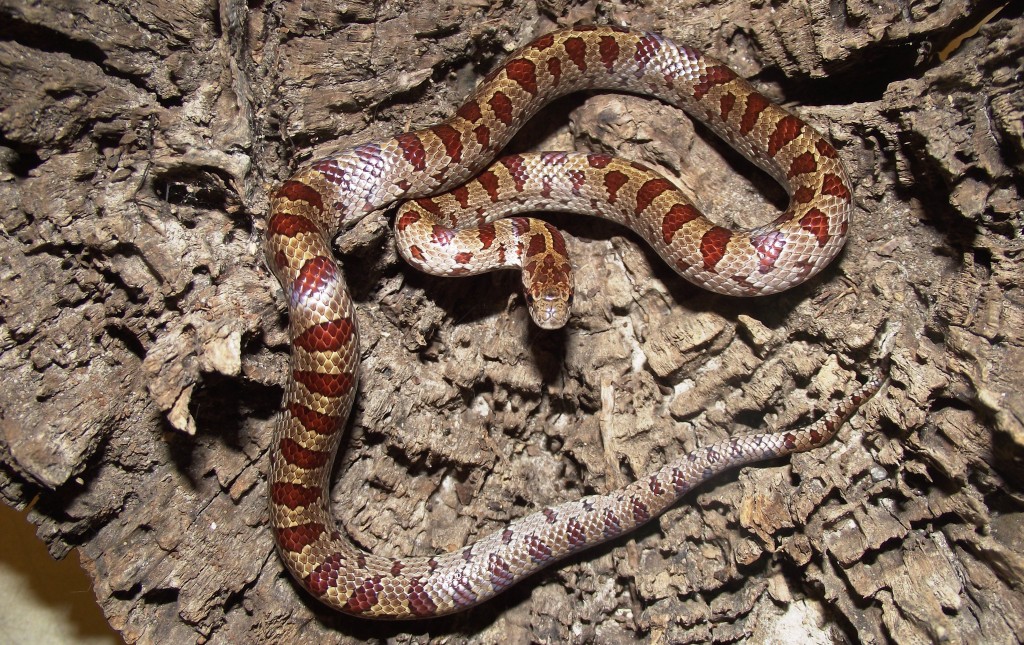

1.Back away and give the snake its space. More often than not, the snake will take this chance to escape and you may never see it again. None of the snakes in Virginia are actively aggressive, and they prefer to retreat rather than facing conflict. If the snake approaches you, allow it more space; you may be between the snake and a known escape route that the snake is trying to reach. If the snake feels trapped, it may try to defend itself as a last resort. Many non-venomous snakes will loudly hiss, rattle their tails, or flatten their heads to mimic venomous snakes in an attempt to scare us away.
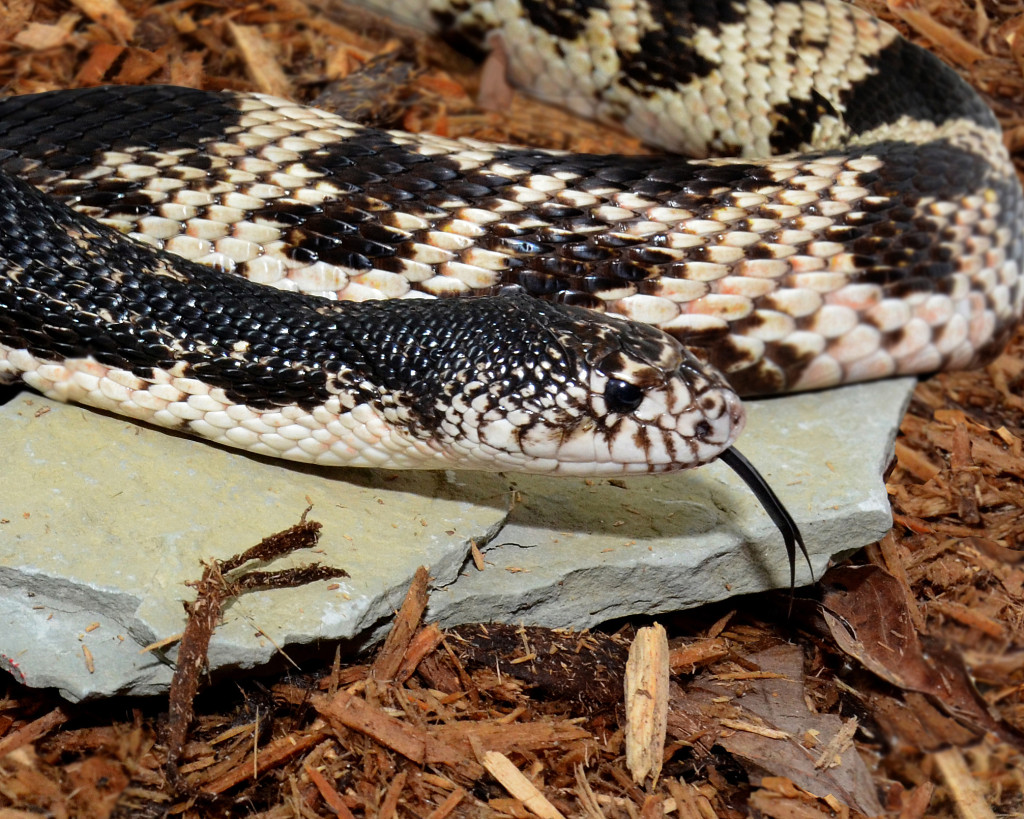

The nonvenomous Pine Snake will vibrate it’s tail, mimicking a rattlesnake when threatened. Photo credit: Karl Rebenstorf
2. If the snake cannot escape or is basking, it may not immediately retreat. Again, if you leave the snake alone for a bit, it will most likely be gone when you return. However, if the snake remains and you suspect it to be a threat, FROM A SAFE DISTANCE try to identify the snake. You should never approach a snake if you don’t know exactly what it is (even if you do, it’s best to just leave them be). Look for the tell-tale signs of a venomous snake: rattle, slit pupils, and triangular head (remember that a non-venomous snake’s head may look triangular if it is trying to mimic a dangerous species).
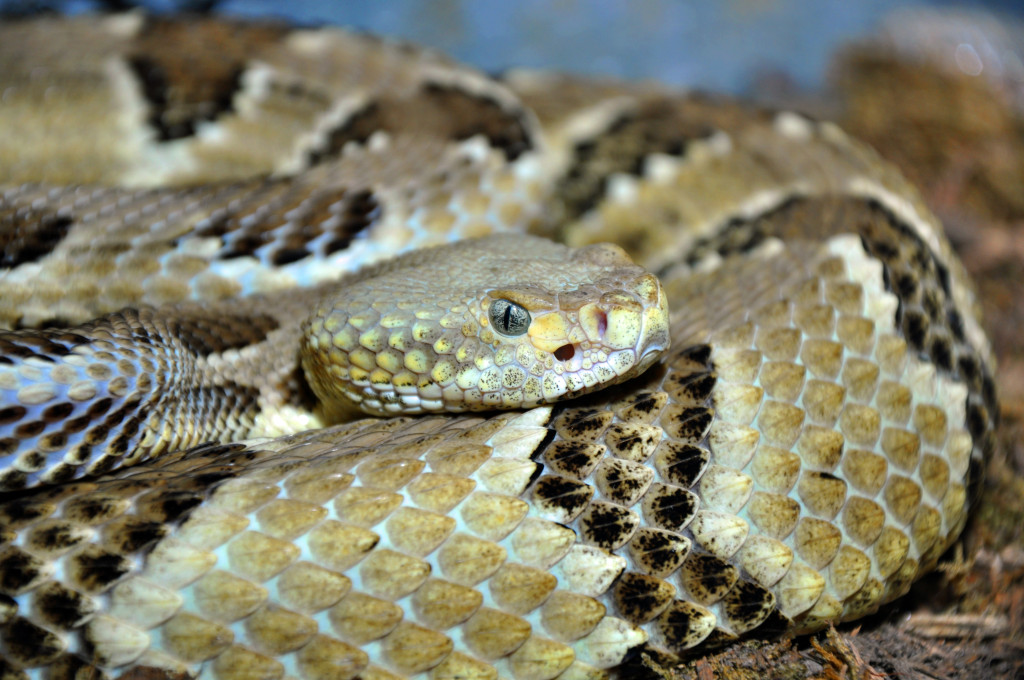

All of Virginia’s venomous snakes are pit vipers, like this Timber Rattlesnake. Photo credit: Karl Rebenstorf
3. The snakes in question almost always turn out to be non-venomous. However, if you truly believe it to be a venomous snake DO NOT TRY TO CAPTURE, MOVE, OR KILL IT. This is for your safety as much as the snake’s: many of the annual venomous snake bites occur when people try to capture or kill venomous snakes (you should never approach ANY wild animal). If you can, try to wait for the snake to leave. If you have major concerns about the snake, such as pets or children, or you believe the snake to be an immediate threat, there are options to safely remove the snake. Many professional individuals and businesses can be called to capture the snake and release it far from human activity. A happy ending for all parties involved!
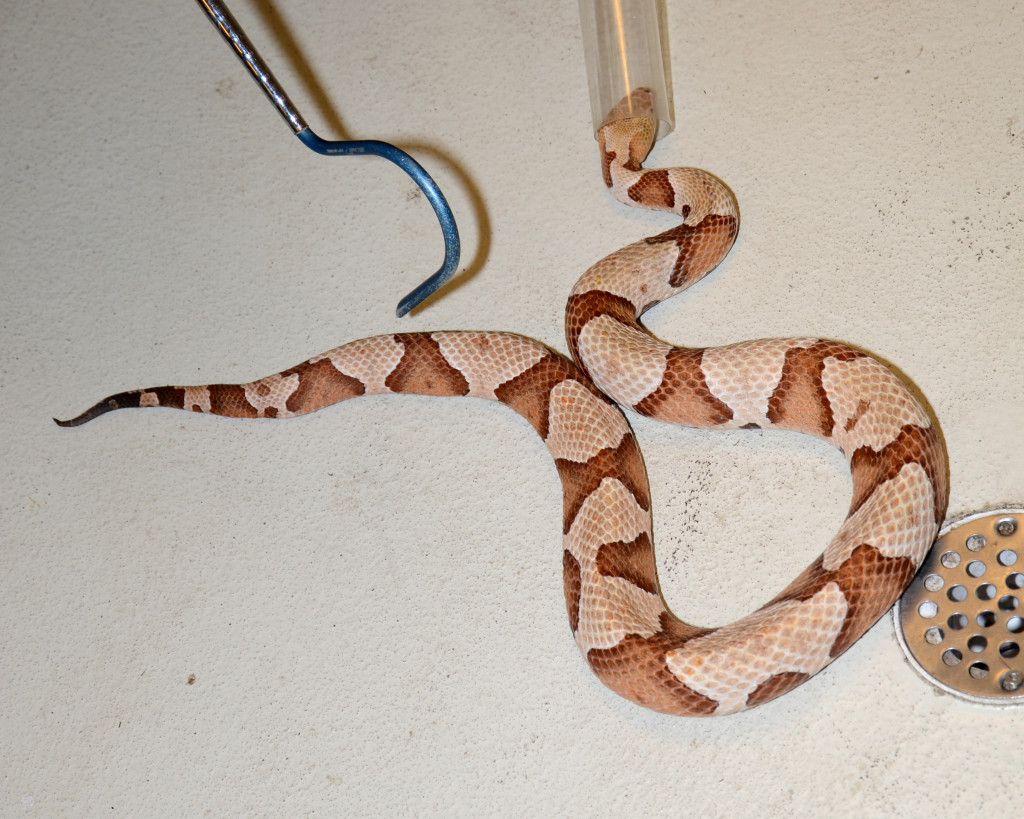

Handling venomous snakes, like this copperhead, requires the right equipment and years of experience. Leave it to the professionals! Photo credit: Karl Rebenstorf
4. Once the snake has left or is safely removed by professionals, you can return to enjoying your summer day. But should you worry that more snakes may return? While it is virtually impossible to deter all snakes completely there are steps you can take to limit their activity in your yard. Remove debris or woodpiles if you can; snakes seek shelter, and if you have any sort of cover in your yard, they will be drawn to it. Rodents will also seek out these shelters, and the snakes may come to hunt them. If you can limit rodent populations on your property, snakes will have no reason to stay. A snake will only remain in an area as long as food is available; if you cut off the food supply, they will have little reason to hang around.
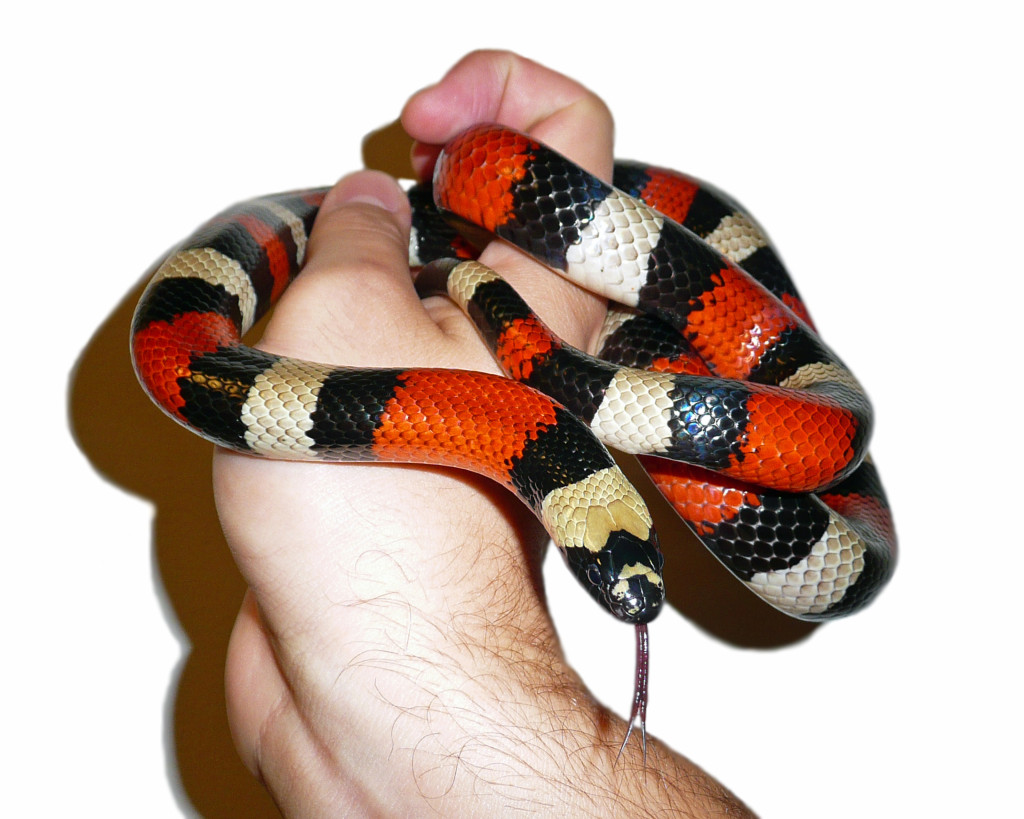

Though our museum snakes, like this milksnake, are used to human interaction, most wild snakes will do their best to avoid areas of human activity! Photo credit: Karl Rebenstorf
Remember, though snakes may be frightening, they are actually of huge benefit to us. They hunt the rodents that frequently reside in and around our homes. Small snakes are friends to gardeners, feeding on destructive insects and voles. If you feel safe letting it be, having a snake in your yard can actually be a very positive experience, and you will likely never have any negative interaction, so long as you give them a little space. If you are unsure what snake species may reside on your property, stop by the Virginia Living Museum and check out the native snake species that call Tidewater Virginia their home. The VLM staff are always happy to help you try to identify wild snakes if you are able to bring us photographs (again, without putting yourself in harms way). So drop on by and learn what cold blooded creatures may be living in your own backyard!
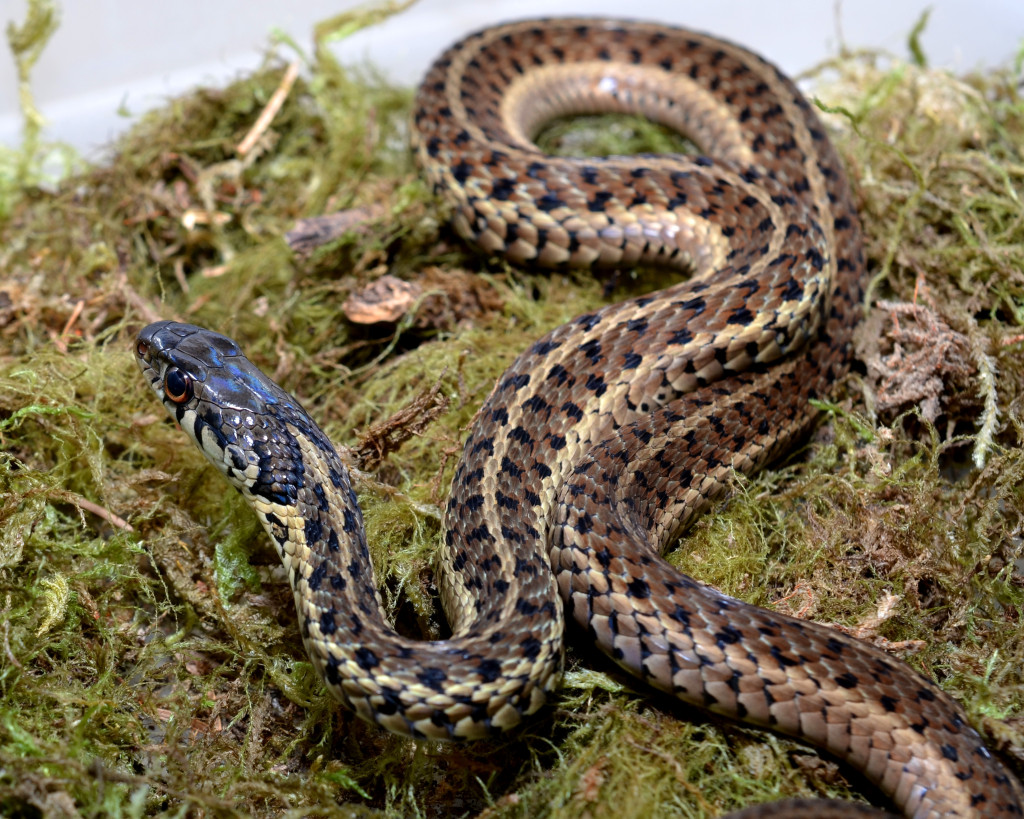

Garter Snakes, common in Virginia, are voracious insectivores, and protect gardens from unwanted pests! Photo credit: Karl Rebenstorf
NOTE: In Virginia it is illegal to kill any species of snake, unless that snake represents an immediate threat to one’s personal health or safety!






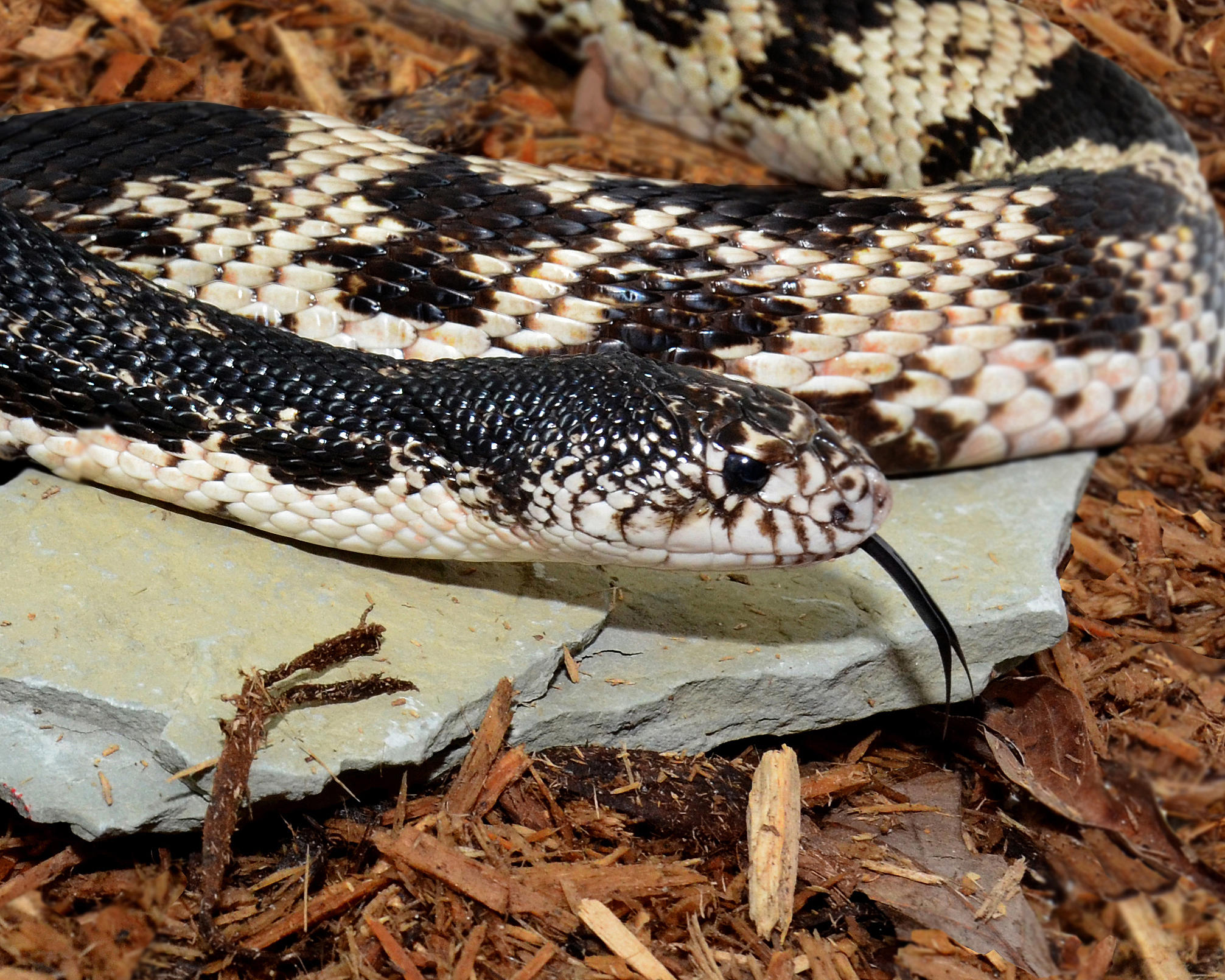
Evan Winfrey
What type of snake is on the bottom of the screen? My dog has eaten one of them and may be ill.
Thank you for the speedy response!
Thomas Waser
The snake pictured is a Garter Snake, one of the most common snakes in Virginia. They are commonly preyed upon by large mammals so it really shouldn’t cause too much of an issue. They do produce a mild toxin that may cause mild symptoms such as salivating, irritation or even a bit of swelling in some dogs, but these should pass within a short time. Definitely notify a vet, just in case your dog got into something else or if perhaps it was a different species of snake. Sorry for the delayed reply and I hope your buddy is feeling a little better!
Laurie
What kind of snake in in the second photo from the top? The one with the reddish markings?
Thomas Waser
That is a mole kingsnake, sometimes also called a prairie kingsnake (Lampropeltis calligaster). They are not a particularly rare species, but they are not commonly found because they spend the vast majority of time underground.
DonHen
Thank you for the pictures and saying which snake it is below the pictures. I just found a garter snake and since I rarely ever see a snake of any kind it was nice to find it here. However, last week I saw a black snake slithering past me about 2ft away. I was on my porch and it went right by me and didn’t know I was there until I made a noise. Literally scare us both to death, the snake and myself. It whipped around in lightning speed and we looked eye to eye. I was boxed with no where to go so if it had wanted me, it’d of had me because it was so fast. Then it got the dickens out of there and I yelled for my husband. It was gone but described it to him. He let me know it was a black racer and the name serves that name very well. It was a cool awesome moment but very scary too. I’m telling ya, that sucker was FAST